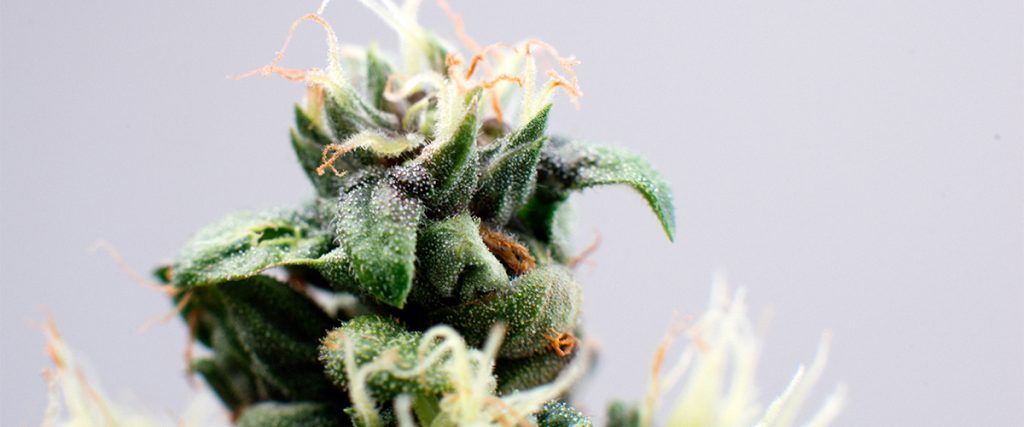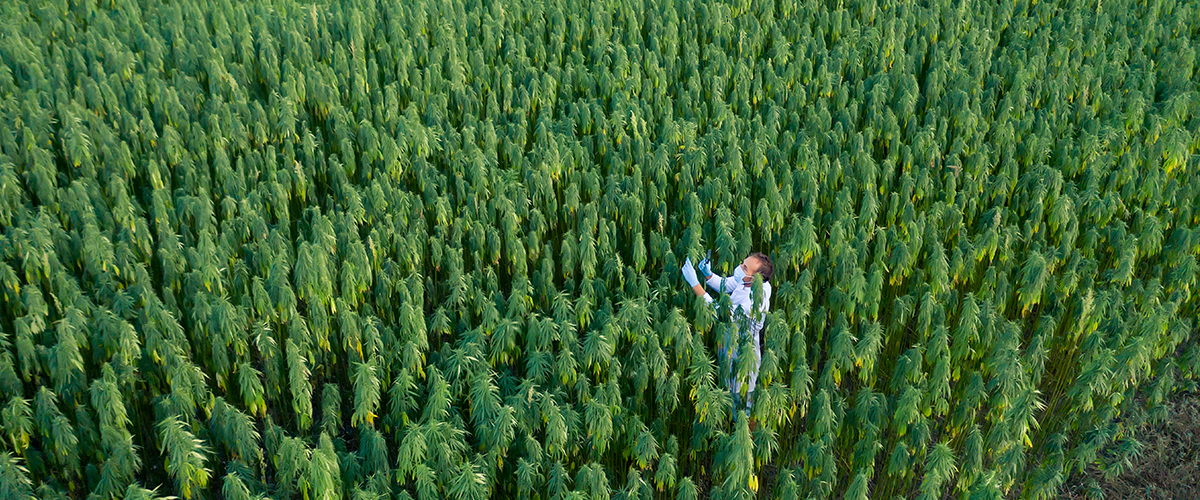A new study exploring cannabis flowers under advanced microscopy has confirmed that the frostier the marijuana flower, the richer the cannabinoids like THC.
Cannabis strains have often been nicknamed after the appearance of the frost like crystals lining their flowers, leading to some catchy identifiers, like Frosty Flakes or Pacific Frost. A new study suggests that these tiny, frosty hairs — known as trichomes — are home to the key compounds responsible for the plant’s psychoactive and beneficial effects, as well as its distinguishing smell.
Researchers from the University of British Columbia recently sought to take a closer look at the internal structure of the frosty crystals. Cannabis scientists have long known that trichomes are small resin glands found on cannabis flowers, leaves, and in smaller quantities, stalks.
What they had not yet discovered is the unique structures and chemical outputs of the different types of glandular trichomes. According to the study, cannabis flowers with the most mushroom-shaped hairs “pack the biggest cannabinoid and fragrance punch.”
“Despite its high economic value, our understanding of the biology of the cannabis plant is still in its infancy due to restricted legal access,” said the study’s co-lead author Teagen Quilichini in a press release. “Trichomes are the biochemical factories of the cannabis plant and this study is the foundation for understanding how they make and store their valuable products.”

Investigating Trichomes
To study the trichomes, researchers used a two‐photon microscopy technique and chemical profiling. Utilizing these techniques, the research team found that stalked glandular trichomes with blue autofluorescence are linked with high cannabinoid levels.
The study’s co-author Sam Livingston said that under ultraviolet light, the stalked trichomes produce a bright blue color and contained a large, pie-shaped disc of cells, while the smaller sessile trichomes, without stalk, discharge a red color, have smaller discs, and give off fewer aromatic terpenes.
“We saw that stalked glandular trichomes have expanded ‘cellular factories’ to make more cannabinoids and fragrant terpenes,” Livingston explained. “We also found that they grow from sessile-like precursors and undergo a dramatic shift during development that can be visualized using new microscopy tools.”
With this new development comes hope for new and more profound research in cannabis structure. The UV light has the potential to be used to monitor trichome maturity on flowers and predict optimal harvest times.
More research is necessary to unlock the potential of the cannabis plant. The study’s principal investigator Anne Lacey Samuels stated that the researchers found “a treasure trove of genes that support the production of cannabinoids and terpenes.”
“With further investigation, this could be used to produce desirable traits like more productive marijuana strains or strains with specific cannabinoid and terpene profiles using molecular genetics and conventional breeding techniques,” Samuels said.
Access to the full article, “Cannabis glandular trichomes alter morphology and metabolite content during flower maturation” published in the Plant Journal can be found, here.
More Cannabis Research
As more states establish marijuana legalization laws and the federal government gradually reforms cannabis policies, cannabis research is moving to the forefront of scientific data. To learn more about the latest in cannabis research, visit our scientific research page.
To read more on the latest ongoings within the cannabis space, check out our news page. Each week we release new reports on the latest developments in cannabis business and policy.






